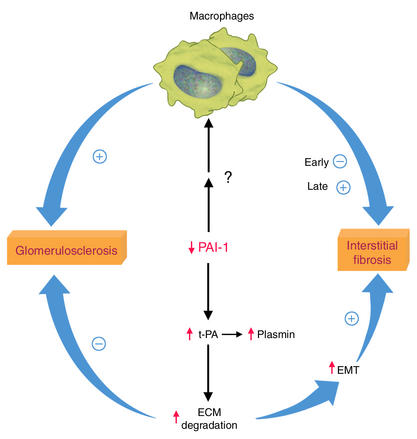Figure 1.
PAI-1 modulates scarring in a complex manner, including effects on cell migration, matrix turnover, and macrophage infiltration. Whereas increased t-PA promotes dissolution of matrix and subsequently lessens glomerulosclerosis, this matrix breakdown facilitates cell migration and epithelial-mesenchymal transition (EMT) and thus contributes to increased interstitial fibrosis. The effects of PAI-1 that facilitate enhanced macrophage infiltration in vivo are complex and have not yet been established. Macrophages have beneficial effects early in interstitial fibrosis and promote fibrosis later. The increased number of glomerular macrophages is linked to glomerulosclerosis. u-PA and its receptor and vitronectin also interact with PAI-1 and contribute to its final effects on fibrosis.

